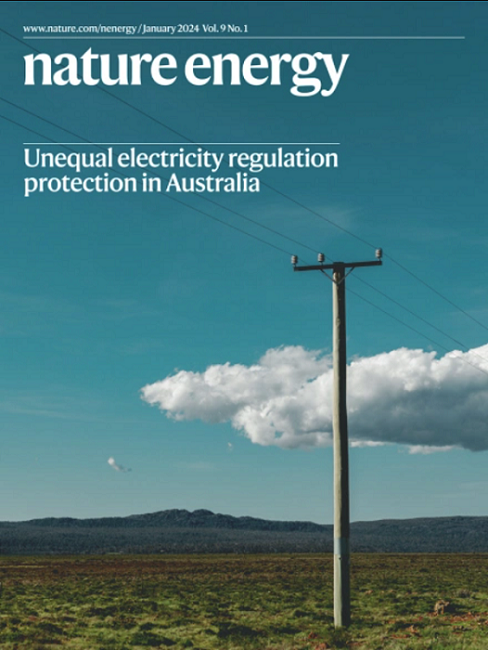Multinary alloying for facilitated cation exchange and suppressed defect formation in kesterite solar cells with above 14% certified efficiency
IF 49.7
1区 材料科学
Q1 ENERGY & FUELS
引用次数: 0
Abstract
Kesterite Cu2ZnSn(S, Se)4 (CZTSSe) solar cells are highly promising low-cost thin-film photovoltaics. However, the efficiency of these solar cells is challenged by severe charge losses and complex defects. Here we reveal through a data-driven correlation analysis that the dominant deep defect in CZTSSe exhibits a donor character. We further propose that incomplete cation exchange in the multi-step crystallization reactions of CZTSSe is the kinetic mechanism responsible for the defect formation. To facilitate the cation exchange, we introduce a multi-elemental alloying approach aimed at weakening the metal–chalcogen bond strength and the stability of intermediate phases. This strategy leads to a significant reduction in charge losses within the CZTSSe absorber and to a total-area cell efficiency of 14.6% (certified at 14.2%). Overall, these results not only present a significant advancement for kesterite solar cells but could also help identify and regulate defects in photovoltaic materials. A detailed understanding of defects in kesterite solar cells is still lacking. Shi et al. identify a key defect and its formation mechanism and use alloying to suppress it, achieving solar cells with 14.2% certified efficiency.


二元合金化可促进阳离子交换并抑制缺陷形成,从而使克斯特石太阳能电池的认证效率达到 14% 以上
Kesterite Cu2ZnSn(S, Se)4 (CZTSSe) 太阳能电池是一种极具前景的低成本薄膜光伏电池。然而,这些太阳能电池的效率受到严重电荷损耗和复杂缺陷的挑战。在此,我们通过数据驱动的相关分析揭示了 CZTSSe 中的主要深层缺陷具有供体特性。我们进一步提出,CZTSSe 多步结晶反应中的不完全阳离子交换是导致缺陷形成的动力学机制。为了促进阳离子交换,我们引入了一种多元素合金方法,旨在削弱金属-钙原键的强度和中间相的稳定性。这一策略显著降低了 CZTSSe 吸收体内部的电荷损耗,并使电池总面积效率达到 14.6%(经认证为 14.2%)。总之,这些研究成果不仅大大推动了钾长石太阳能电池的发展,而且有助于识别和调节光伏材料中的缺陷。
本文章由计算机程序翻译,如有差异,请以英文原文为准。
求助全文
约1分钟内获得全文
求助全文
来源期刊

Nature Energy
Energy-Energy Engineering and Power Technology
CiteScore
75.10
自引率
1.10%
发文量
193
期刊介绍:
Nature Energy is a monthly, online-only journal committed to showcasing the most impactful research on energy, covering everything from its generation and distribution to the societal implications of energy technologies and policies.
With a focus on exploring all facets of the ongoing energy discourse, Nature Energy delves into topics such as energy generation, storage, distribution, management, and the societal impacts of energy technologies and policies. Emphasizing studies that push the boundaries of knowledge and contribute to the development of next-generation solutions, the journal serves as a platform for the exchange of ideas among stakeholders at the forefront of the energy sector.
Maintaining the hallmark standards of the Nature brand, Nature Energy boasts a dedicated team of professional editors, a rigorous peer-review process, meticulous copy-editing and production, rapid publication times, and editorial independence.
In addition to original research articles, Nature Energy also publishes a range of content types, including Comments, Perspectives, Reviews, News & Views, Features, and Correspondence, covering a diverse array of disciplines relevant to the field of energy.
 求助内容:
求助内容: 应助结果提醒方式:
应助结果提醒方式:


